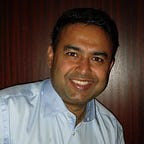Old and New in Health. Why Self-Driving Practice will Usher in Major Improvements in Healthcare
Self-Driving Practice will have a similar impact to healthcare as transferring oral knowledge to text books had in the 9th century. Before we jump into this let me first describe to you a fascinating place I visited recently.
I was recently walking along on the streets of Salerno in Italy and came across the oldest and first medical school in the western world. Scuola Medica Salernitana has origins somewhere in the 9th century and ushered in the western world an era of system, process and education related to healthcare. It has stood there for 12 centuries and endeavored to change the way medicine was taught in medieval times and beyond. [1]
As Wikepedia notes that beginning 1077 AD people from all over the world started to come to the “Scuola Salernitana”, sick to get themselves cured, and students to learn the practice of medicine. Salerno the city that housed this school became the “Town of Hippocrates” because Scuola Salernitana synthesized the Greek and Latin traditions with Arab and Jewish and eastern cultures. The focus was on prevention of the disease and not curing. Again as Wikepedia notes, this formed the basis of empirical method of modern medicine. Major texts such as Liber de Simplici Medicina by father and son duo Plantearius and Trotula de Ruggiero the most famous female doctor who published 3 texts on women’s medicine around 1100 AD were written here. These were major changes and ushered in an era of knowledge, process, rigor and discipline that transformed the human healthcare discipline. Verbal knowledge and traditions were documented and what used to be oral traditions gave way to systematic studies using text books.
We believe that a similar process change is happening around us today with artificial intelligence, machine learning and big data. Large volumes of data coupled with deep learning and artificial intelligence is letting us usher in an era that takes all the knowledge from text books and combines it with case studies and real patient data from millions of providers and billions of patients to elevate healthcare in real time.
Power of Solo and Independent Practitioners
According to AMA [2] about half of the physicians in the United States are independent or solo practitioners. According to the American Dental Association [3] and AVMA this number is close to over 92% for dentists and veterinarians in the United States. This group represents combined power of over a trillion US dollars in market size.
Solo and Independent Practices are generally owner operated and have a reverse pyramid structure in terms of work load and responsibilities. In general the practicing doctor is the individual contributor at the bottom of the pyramid and is being managed by team members who may not have the educational or managerial training for running businesses. If the doctor does not show up in the practice, the practice does not make money that day.
All the processes of determining inventory, scheduling, ordering, calling patients and confirming are highly manual. The solo practitioner has to keep training and retraining his or her team members for each of these functions. It is very similar to how knowledge of medicine was transferred in oral traditions back in the 9th century until Scuola Salernitana changed that to text books and systematic teaching. We think the current state of the art in artificial intelligence, machine learning, computer vision is capable of helping us implement this knowledge in the next level of automation in healthcare. It makes possible a Self-Driving Practice.
Self-Driving Practice
An article I published in May in Medium explains what is a Self-Driving Practice. [4]
Before the end of the year our goal is to implement a Self-Driving Practice. A Self-Driving Practice is essentially using artificial intelligence, machine learning and chat bots to figure out how to auto schedule patients, optimize fees and receivables and auto order appropriate inventory based on procedures scheduled and needs of the practice. We have achieved less than 5% error rate on accurately predicting production of a practice for the next 30 days.
Let’s establish a little bit more context here. You are a doctor and you have a practice that you own which helps you care for your patients and pays your bills.
Self-Driving Practice per our definition stays away from “meaning of life” type of a debate. It is supposed to evoke parallels with the popular notion of Self-Driving Cars. Basically we want your practice to help you achieve four major things easily.
A. Auto scheduling for followup treatments, patients who are going inactive and auto confirmation for patients with capability to smartly fill schedule
B. Predictive analytics to help drive revenue to a certain target. We have achieved 95% accuracy in this capability
C. Auto Inventory and ordering by auto reading your schedule, your consumption patterns, and order using your favorite distributor
D. Insight and recommendation engine to know how to update you based on natural language processing and voice enabled AI technology
At the recent major dental and veterinary conferences we launched the first steps towards self driving practice [5], [6]. We launched Practice Assistant [7]. Customers with an Amazon Echo device, and are based in the US, can purchase a Practice Assistant subscription now through the Sikka Marketplace.
Practice Assistant
Practice Assistant uses Amazon Alexa and Google Home as the conversational tools that a doctor can use to find out the state of their practice, next appointment, supplies, inventory and more all from the comfort of their home or office. Here is a video to watch. https://www.youtube.com/watch?v=0Im4-nPeFY4
#AI #MachineLearning #selfdrivingpracticein #RetailHealth #dentistry, #veterinary, #optometry, #chiropractic, #orthodontics, #oralsurgery, #audiology, #periodontics, #endodontia. #knowledge is #power.
[1] Wikipedia article on Scuola Salernitana
https://en.m.wikipedia.org/wiki/Schola_Medica_Salernitana
[2] AMA Study
[3] ADA Study
[5] http://www.prweb.com/releases/2017/08/prweb14625070.htm
[6] http://www.prweb.com/releases/2017/08/prweb14629275.htm
[7] https://dentechblog.blogspot.com/2017/07/sikkas-practice-assistant-service-for.html
